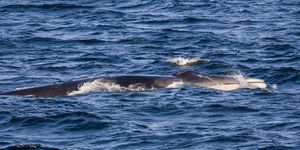How Math Can Save Endangered Species
Due to many contributing factors one of which is climate change, today the risk of extinction poses stronger than ever with species like the blue whale, Bengal tiger and the green turtle being classified as endangered. In attempts to improve the chance of survival in many species, a study published in Ecology Letters proposes a mathematical model that understands the dynamics of survival and reproduction ultimately predicting the fate of populations in nature and encouraging management actions.
Learn more about animal extinction:
"A model that over-simplifies survival and reproduction can give the illusion that a population is thriving when in reality it will go extinct,” explains Fernando Colchero, associate professor and author of the publication in Ecology Letters.
The research focused on the exploration of stochastic population models that predict changes in populations over time. The study used statistics, mathematical derivations, and computer simulations using data derived wild animals of 24 species of vertebrates. The focus was producing a mathematical model that recreates the population dynamics through an understanding of species demography. The model contains factors that describe a species' environment, survival, and reproduction to determine the population's size and growth—for practicality some assumptions are crucial. For example, the assumption a species survival and reproduction are constant with age. These assumptions where challenged by Colcehro’s research by factoring in age-specific survival and reproduction, trade-offs between survival and reproduction, and the fact that in some cases conditions that favor survival will be unfavorable for reproduction, and vice versa.
Models of age‐specific mortality of 24 species of vertebrates in comparison to models including only age‐independent adult mortality.
Credit: Ecology Letters, “The diversity of population responses to environmental change”
Results of the study concluded an improvement for more accurate predictions for a species population growth. Although technical in nature, the model brings practical implications by describing the reasons for extinction—such explanation can increase management actions and implement new policies that aid in preventing extinction of endangered species.
Source: University of Southern Denmark









